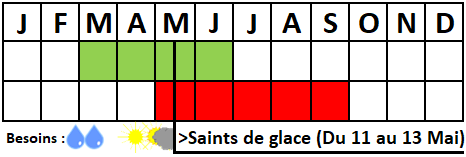! Nouveau site ici !
Vita > Plantae > Magnoliophyta > Magnoliopsida > Geraniales >
Tropaeolaceae > Tropaeolum
Tropaeolum majus
(Capucine)
![Illustration Tropaeolum majus, Curtis´s Botanical Magazine (vol. 62 [ser. 2, vol. 9]: t. 3375 ; 1835) [Miss. C.M. Pope] , via plantillustrations.org](../inc/images/illustrations/10468.jpg )


 | **** - ***
| **** - ***
Vita > Plantae > Magnoliophyta > Magnoliopsida > Geraniales >
Tropaeolaceae > Tropaeolum
Tropaeolum majus
(Capucine)
![Illustration Tropaeolum majus, Curtis´s Botanical Magazine (vol. 62 [ser. 2, vol. 9]: t. 3375 ; 1835) [Miss. C.M. Pope] , via plantillustrations.org](../inc/images/illustrations/10468.jpg )
-5°C
plante comestible naine ou grimpante (d'une trentaine de centimètres à plusieurs mètres) cultivée pour ses jolies fleurs de couleur crême à orange-rouge mais aussi pour ses vertus médicinales.
⬀
Le  donne accès au menu
donne accès au menu (c'est votre point de repère) 😊 ;
En dessous vous avez la classification, à partir de la vie (Vita, premier rang) jusqu'à la classe au dessus de la plante, dont vous trouvez ensuite le nom scientifique/botanique (latin) puis le nom commun (français), le cas échéant ;
C'est aussi un lien vers la fiche complète (tout comme la ✖, en bas à droite, et le +, en dessous de la description) ;
Vient alors l'illustration (ou ce qui la remplace, en attendant), la comestibilité :
Et en bas
⬂





